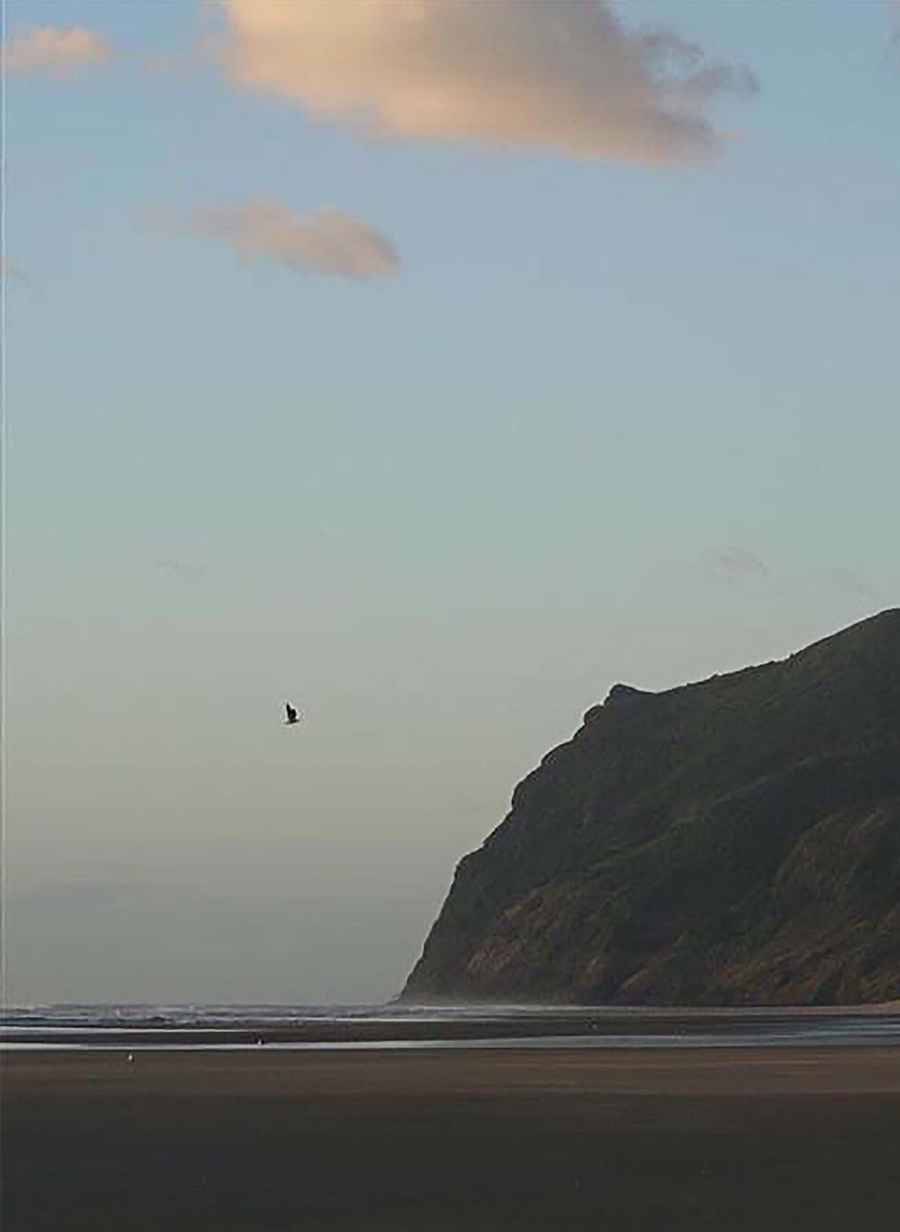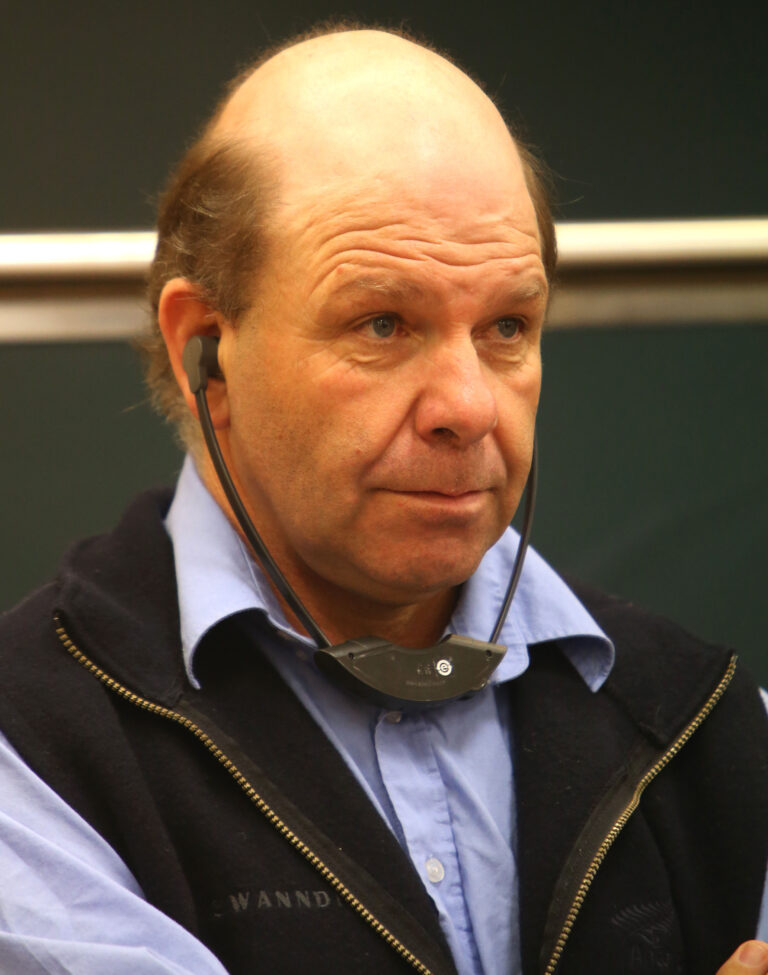

Bluff and Lies
25th October 2024
How one man’s fabrications about Māori land claims exposed deep-rooted prejudices and, surprisingly, led to an unexpected journey of healing.
By Anna McMartin
It’s difficult to say when this story begins, so we will start in the 1870s. Where we start is clearer, yet somehow, as we’ll see, it is still in dispute.
Maunganui Bluff is in Northland, on the west coast. It is part of what remains of the volcano Waipoua, formed by basalt flows that folded over one another, shaping the bluff’s face. You walk up through coastal forest and outcrops of rock, across the ancient crater. When you reach the highest point, you are four-hundred-and-sixty metres over the sea.
Maunganui Bluff belongs to the iwi Te Roroa, although for a time it was taken from their hands.
Two chiefs, Tiopira and Parore, were in a dispute over the bluff and its surrounds: prime land, with abundant freshwater and fish and crops. The Crown wanted to buy the land; and when the chiefs worked out a division between them, it made the officials’ job easier. They just had to map the areas to be purchased, as the chiefs had agreed. But instead of observing traditional boundary markers and setting aside reserves, officials simply split the land with a clumsy straight line on their map.
Maunganui Bluff was sold when it never should have been. By the century’s close, Te Roroa was all but landless.
It’s tempting to think the past is behind us, our marks on the world only fleeting: this too shall pass. Today’s news is tomorrow’s fish and chip paper. Perhaps the Herald’s recent advertorial on the foreshore and seabed, published on behalf of Hobson’s Pledge, is a case in point.
We let ourselves off the hook too easily. Harms can live long after false words, their speakers, are forgotten. This is a story not just of a liar, but those who worked to make his lies persuasive. Some of them do that work still.

Allan Titford bought the farm at Maunganui Bluff in 1986, cheap at $600,000. He planned to subdivide it, quickly paying off his mortgage to own the remaining land debt free. Soon after, his troubles began. Local Māori occupied part of his farm. Titford met with them, only to have a racial slur thrown at him. Things escalated. His cattle were shot. The police refused to intervene.
In December 1988, Te Roroa brought a claim to the Waitangi Tribunal. The claim related to Maunganui Bluff and nearby lands. Things had been looking up: Titford had a potential buyer for another parcel of land. But now began the threats. When the claimants gave Titford twenty-four hours to leave, he refused. The next morning, he learned a vacant farmhouse had been destroyed in a blaze. The fire was on the parcel of land he was about to sell, and the buyer pulled out.
Journalists and TV crews showed up. More cattle were shot, lambs were stolen, and a bulldozer sabotaged with sugar in the tank. Titford’s wife Susan wrote to Prime Minister David Lange. It didn’t help. A claimant made a death threat before turning up on the farm, drunk and high, trying to assault Titford with a piece of steel. An attempt was made to burn down the Titfords’ family home while they were out. When they didn’t succeed, the shadowy arsonists came back. Their second attempt razed the house to ashes.
We let ourselves off the hook too easily. Harms can live long after false words, their speakers, are forgotten. This is a story not just of a liar, but those who worked to make his lies persuasive.
No one could withstand this persecution. In 1992, the Waitangi Tribunal reported back on Te Roroa’s claim, recommending Maunganui Bluff be returned to the iwi at the Crown’s expense. Forced off the farm, Titford had no choice but to sell to the Crown in 1995 for $3.25 million, so Maunganui Bluff could be held for an eventual Treaty settlement.
Throughout his ordeal, Titford talked eagerly to media. He became a kind of folk hero. Newspapers even printing a picture of him with his wife Susan and their youngest child by the remnants of their home. The coverage stoked nationwide bitterness and anger: at Māori, at Treaty settlements and the Waitangi Tribunal, and at the sinister government cabal behind them. After all, Allan Titford — ordinary kiwi, honest and hardworking bloke — could have been any of us.
And if you think his tale sounds suspicious, well, you’re right.
To get to the bottom of what happened at Maunganui Bluff, we’ve got some tenacious myths to dispel.
At the time of Titford’s claims of persecution, the Waitangi Tribunal was still pretty new, created in 1975. There was finally a body to investigate breaches of te Tiriti but there was a catch. The Tribunal could only hear claims about current government actions, which was limiting. Many of the gravest breaches happened the century before.
In 1985, just before Titford bought the farm, the then-government extended the Tribunal’s authority to hear claims right back to 1840. This was a big deal: the modern era of Treaty settlements was now underway. There were legitimate questions how this might play out — settlements are complex — but simmering ill will and misinformation too. The phrase ‘Treaty gravy train’ was born. It was a handy new bowl for serving up reheated racism. Despite the rancid taste, plenty of people wanted seconds.
Still, putting context aside and looking at the facts: did the Waitangi Tribunal take Titford’s farm?
Quite simply, no. It couldn’t. The Tribunal doesn’t have, and has never had, powers over land, except some Crown-owned land in limited situations. It can only make recommendations. Nor has the Tribunal ever had powers over the courts. The courts may find the Tribunal’s work helpful but they follow laws made by Parliament, not Tribunal directions.
This context of ill will and misinformation created a moment for nasty opportunism. Let’s return to the man who exploited that moment. What follows comes from Te Roroa and an April 1991 Department of Conservation report. It is true that in 1987, the iwi occupied part of Titford’s farm. You’ll soon understand why.
